 | TODAY IN SCIENCE HISTORY
NEWSLETTER - 29 DECEMBER |
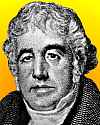 On 29 Dec 1766, Charles Macintosh was born, a Scottish chemist and inventor who created a waterproof cloth used for clothing. Waterproof coats are still known by his name, or the shorter word “mac.” One of the early pages on this website was written about Charles Macintosh to give an outline of the inventiveness of this businessman. On 29 Dec 1766, Charles Macintosh was born, a Scottish chemist and inventor who created a waterproof cloth used for clothing. Waterproof coats are still known by his name, or the shorter word “mac.” One of the early pages on this website was written about Charles Macintosh to give an outline of the inventiveness of this businessman. |
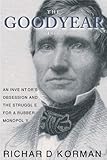 On 29 Dec 1800, Charles Goodyear was born, an American inventor, who invented the vulcanization process which made rubber products practical. Today's Science Store pick is: The Goodyear Story: An Inventor's Obession and the Struggle for a Rubber Monopoly, by Richard Korman, who tells a suspenseful story of scientific experimentation and continual patent monopoly battles. Goodyear made numerous trips to debtors' prison as he steadfastly held onto his dream of using rubber to change just about every aspect of life. The book portrays the factory life during America's industrial age in the 1830s and '40s describing the aproned men who chopped rubber with axes and knives and the machines that ground it. It is available New from $9.54. Used from $0.01. (As of time of writing.). On 29 Dec 1800, Charles Goodyear was born, an American inventor, who invented the vulcanization process which made rubber products practical. Today's Science Store pick is: The Goodyear Story: An Inventor's Obession and the Struggle for a Rubber Monopoly, by Richard Korman, who tells a suspenseful story of scientific experimentation and continual patent monopoly battles. Goodyear made numerous trips to debtors' prison as he steadfastly held onto his dream of using rubber to change just about every aspect of life. The book portrays the factory life during America's industrial age in the 1830s and '40s describing the aproned men who chopped rubber with axes and knives and the machines that ground it. It is available New from $9.54. Used from $0.01. (As of time of writing.). | | For picks from earlier newsletters, see the Today in Science History Science Store home page. | |
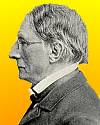 | For the first time there was constructed with this machine [locomotive engine] a self-acting mechanism in which the interplay of forces took shape transparently enough to discern the connection between the heat generated and the motion produced. The great puzzle of the vital force was also immediately solved for the physiologist in that it became evident that it is more than a mere poetic comparison when one conceives of the coal as the food of the locomotive and the combustion as the basis for its life. - Carl Friedrich Wilhelm Ludwig, German physiologist and biochemist (born 29 Dec 1816).  |
| 'Planning' is simply the result of experience read backward and projected into the future. To me the 'purposive' action of a beehive is simply the summation and integration of its units, and Natural Selection has put higher and higher premiums on the most 'purposeful' integration. It is the same way (to me) in the evolution of the middle ear, the steps in the Cynodonts (clearly shown by me in 1910 and by you later in Oudenodon) make it easier to see how such a wonderful device as the middle ear could arise without any predetermination or human-like planning, and in fact in the good old Darwinian way, if only we admit that as the 'twig is bent the tree's inclined' and that each stage conserves the advantages of its predecessors... The simple idea that planning is only experience read backward and combined by selection in suitable or successful combinations takes the mystery out of Nature and out of men's minds. - William King Gregory, American palaeontologist (died 29 Dec 1970).  |
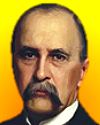 | The future belongs to Science. More and more she will control the destinies of the nations. Already she has them in her crucible and on her balances. - Sir William Osler, Canadian physician, medical educator and author (died 29 Dec 1919).  |
| Before you look at today's web page, see if you can answer some of these questions about the events that happened on this day. Some of the names are very familiar. Others will likely stump you. Tickle your curiosity with these questions, then check your answers on today's web page. |
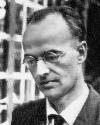 | A German-born physicist turned spy was born 29 Dec 1911. He worked with the Manhattan Project at Los Alamos, U.S., on the atom bomb, and in 1946 became head of the theoretical physics division at Harwell, UK. He was arrested and convicted (1950) for giving vital American and British atomic-research secrets to the Soviet Union.
 Can you name this spy? |
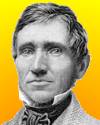 | On 29 Dec 1800, Charles Goodyear was born, an American inventor, who discovered the vulcanization process that made possible the commercial use of rubber. Originally the use of rubber was limited since it would freeze hard in winter and become gummy in summer. After years of persistent experimentation, he mixed and baked a certain substance and rubber together, creating a tough, cured compound that could withstand the heat and stress.
 Goodyear discovered which substance to add to rubber in the vulcanizing process? |
 | The name of Charles Macintosh, a Scottish inventor, born 29 Dec 1766, remains associated with the raincoat made with cloth waterproofed by the process he invented.
 What was Macintosh's waterproofing method? |
 | William Merriam Burton (1865-1954) was an American chemist who developed a thermal cracking process for the refining of crude petroleum.
 What is the benefit of his process? |
 | On 29 Dec 1987, cosmonaut Yuri Romanenko ended his record stay in space.
 What was the duration of his time in space, to the nearest hundred days? |
 | On 29 Dec 1997, a country began killing its entire chicken population to stem the spread of a mysterious avian flu that had already killed four people. The government decision came after birds at two sites were found to be infected with the H5N1 virus.
 Which is this country, which was the first where humans died from the H5N1 flu virus. |
When you have your answers ready to all the questions above, you'll find all the information to check them, and more, on the December 29 web page of Today in Science History. Or, try this link first for just the brief answers.
Fast answers for the previous newsletter for December 28: stretches of DNA • bending of starlight by gravity • Eiffel Tower • a relationship between the values of the wave numbers of spectral lines of an element. • the Firth of Tay at Dundee, Scotland • alpha particles (hint: do the math on the protons to change Be to C). |
 If you enjoy this newsletter, the website, or wish to offer encouragement or ideas, please send feedback by using your mail reader Reply button. If you enjoy this newsletter, the website, or wish to offer encouragement or ideas, please send feedback by using your mail reader Reply button.
Your click on a StumbleUpon, Google+ or Facebook social button on the site webpages is also a welcome sign of appreciation. Thank you for using them. |
To find citations for quotations go to the corresponding webpage by clicking on the “quotes” balloon icon. Sources for the thumbnails appear on today's webpage with the corresponding item.
� This newsletter is copyright 2013 by todayinsci.com. Please respect the Webmaster's wishes and do not put copies online of the Newsletter � or any Today in Science History webpage. (If you already have done so, please remove them. Thank you.) Offline use in education is encouraged such as a printout on a bulletin board, or projected for classroom viewing. Online, descriptive links to our pages are welcomed, as these will provide a reader with the most recent revisions, additions and/or corrections of a webpage. For any other copyright questions, please contact the Webmaster by using your mail reader Reply button. |
--
If you do not want to receive any more newsletters,
Unsubscribe To update your preferences and to unsubscribe visit
this link 


 On 29 Dec 1766, Charles Macintosh was born, a Scottish chemist and inventor who created a waterproof cloth used for clothing. Waterproof coats are still known by his name, or the shorter word “mac.” One of the early pages on this website was written about Charles Macintosh to give an outline of the inventiveness of this businessman.
On 29 Dec 1766, Charles Macintosh was born, a Scottish chemist and inventor who created a waterproof cloth used for clothing. Waterproof coats are still known by his name, or the shorter word “mac.” One of the early pages on this website was written about Charles Macintosh to give an outline of the inventiveness of this businessman. 


 Can you name this spy?
Can you name this spy? 
 Goodyear discovered which substance to add to rubber in the vulcanizing process?
Goodyear discovered which substance to add to rubber in the vulcanizing process? 
 What was Macintosh's waterproofing method?
What was Macintosh's waterproofing method? 
 What is the benefit of his process?
What is the benefit of his process? 
 What was the duration of his time in space, to the nearest hundred days?
What was the duration of his time in space, to the nearest hundred days? 
 Which is this country, which was the first where humans died from the H5N1 flu virus.
Which is this country, which was the first where humans died from the H5N1 flu virus.  If you enjoy this newsletter, the website, or wish to offer encouragement or ideas, please send feedback by using your mail reader Reply button.
If you enjoy this newsletter, the website, or wish to offer encouragement or ideas, please send feedback by using your mail reader Reply button. 

Δεν υπάρχουν σχόλια:
Δημοσίευση σχολίου